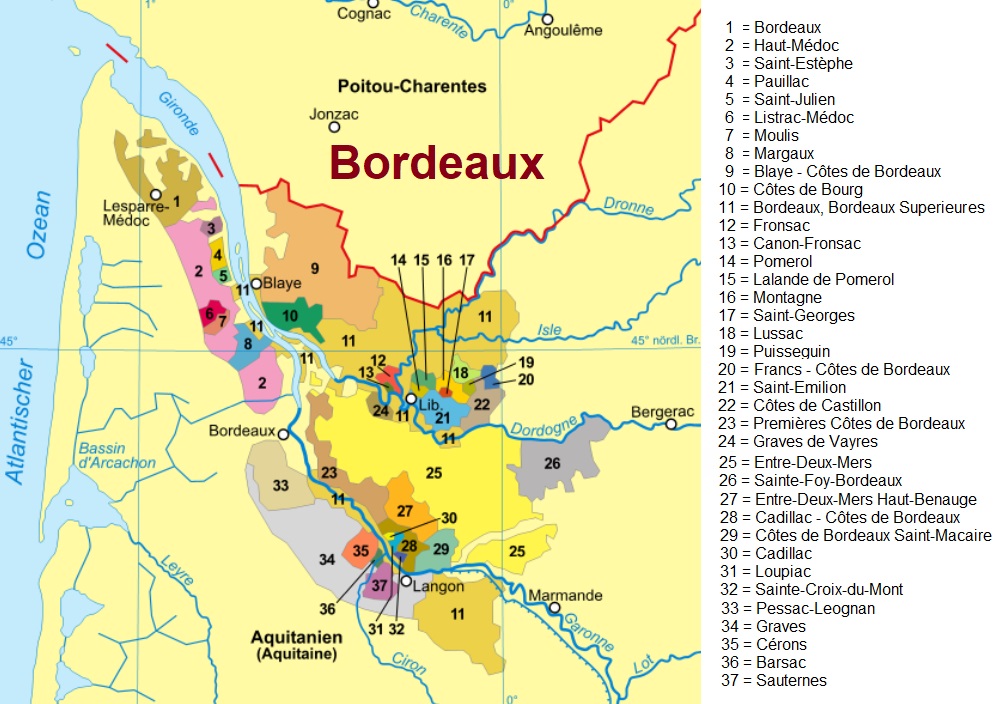The importance of the city of Bordeaux as a trading port for wines arose from its connection with England in the mid-12th century. In 1152, Eleanor of Aquitaine (1122-1204) married Henry Plantagenet Count of Anjou (1133-1189). Eleanor brought as her dowry, among other things, Gascony and what is now the Bordeaux area. When her husband ascended the English throne as King Henry II in 1154, he laid claim to large parts of France. This marked the beginning of the more than 300-year-long dispute between England and France, culminating in the Hundred Years' War (1337 to 1453). At the time of English rule, wines were shipped to England on a large scale via the port of Bordeaux. It is no coincidence that important trading companies were established here as a result, where the wines were sold at auctions.

High point in the Middle Ages
The peak in the Bordeaux wine trade was then reached in the 14th century, when the Vintners Company (association of English wine merchants), which still exists today, was founded. By the middle of this century, an estimated 700,000 hectolitres of Clairet (Claret) were shipped to England every year, which was equivalent to an average of six bottles per capita. In 1453, after protracted wars and turmoil, all English lands on the mainland finally became part of France. The wine trade with England continued, but never reached the volume of the past. In any case, this was the foundation stone for many négociants (wine merchants) in Bordeaux.
Around the middle of the 17th century, Holland, the heartland of today's Netherlands, rose to become the world's maritime power and developed a tremendous demand for wine or alcoholic beverages of all kinds. Wine was bought in large quantities in Bordeaux, among other places, and transported by ship to the numerous Dutch colonies overseas. The wines were often spritted in order to preserve them. These transactions brought the Dutch into the country, who established viticulture here on a larger scale by clearing the swamps in the Médoc. At the end of the century, the trade war between France and England escalated, and as a result, tariffs on French wine were constantly increased.
Market in England
In England, an exclusive market for Bordeaux wines developed, which only wealthy circles could afford. Wine merchants from there founded trading houses in Bordeaux. These were Barton & Guestier (1725), William Johnston (1734) and Tastet & Lawton (1740). They were later followed by German ones such as Cruse (1819), Eschenauer (1821), Kressmann (1858) and Sichel (1883). Important houses of French origin are the Borie-Manoux or Castéja family empire (1870), Dourthe-Kressmann (1840), Calvet (1870), Castel Frères (1949), Cordier (1886), Merlaut and Moueix (1930). Strong connections existed from the beginning of the 18th century and still exist today through the German wine trading house Carl Tesdorpf Weinhandel zu Lübeck.
Négociants (trading houses) in France
The négociants (trading houses) were not only involved in buying and selling. The purchased wine was stored and matured in the chais (cellars) in Bordeaux or the surrounding area and then distributed in barrels and later also in bottles. Their cellar masters were often much better trained than those of the producers. Brokers formed the link between producers and trading houses. This also made it possible to blend wines of different qualities and, inadmissibly, even wineries. After the Second World War (1939-1945), a fundamental change occurred in this respect. Until then, for the most part, even excellent producers had sold wine in barrels to the merchants.
One of the pioneers was Baron Philippe de Rothschild (1902-1988), who, to the annoyance of the trading houses, introduced the complete self-bottling of the wines of his Château Mouton-Rothschild as early as the 1924 vintage. This producer bott ling was documented on the label by the designation "Mise en bouteilles au Château". However, it was not until 1959 that the Crus Classés were also only sold to the trade in producer bottling. This greatly reduced the supremacy of the formerly almost omnipotent Bordeaux wine trading houses. For information on vineyards and wine quantities in all wine-growing countries, see under the heading Wine production quantities.
Map: By Domenico-de-ga from Wikipedia, CC BY-SA 3.0, link
Changes from the original by Norbert Tischelmayer 2017
Voices of our members

wein.plus is a handy, efficient guide to a quick overview of the colourful world of wines, winegrowers and grape varieties. In Wine lexicon, the most comprehensive of its kind in the world, you will find around 26,000 keywords on the subject of grape varieties, wineries, wine-growing regions and much more.
Roman Horvath MW
Domäne Wachau (Wachau)